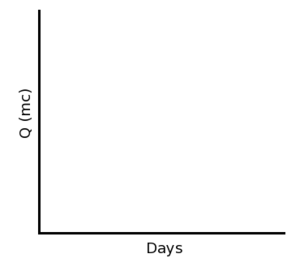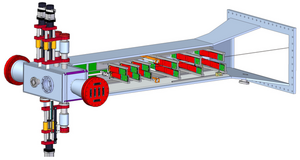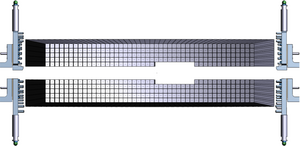Difference between revisions of "The HPS Run Wiki"
| Line 141: | Line 141: | ||
== Run Plan:March 22-23, 2015 (day/swing/owl) == | == Run Plan:March 22-23, 2015 (day/swing/owl) == | ||
| − | Overview: Very bad beams last night. We need better standards for what is acceptable at 2C21 and 2C24, and upstream halo counters before sending beam downstream to the dump. We returned to tagger and MCC will work on calibrating upstream BPMs. Tief will work on optics matching starting 1PM today. | + | Overview: Very bad beams last night. We need better standards for what is acceptable at 2C21 and 2C24, and upstream halo counters before sending beam downstream to the dump. Please read ACCEPTABLE BEAM CONDITIONS on this page. |
| + | |||
| + | We returned to tagger and MCC will work on calibrating upstream BPMs. Tief will work on optics matching starting 1PM today. We will not open on Tuesday (TUESDAY DAY SHIFT IS ON). We may on Wednesday, TBD. Program: 1) MCC retunes upstream beam and calibrates BPMs; (2) MCC works on beamline optics, hopefully restoring beams to alcove when complete;(3) when have decent beams to alcove, try to have MCC calibrate downstream BPMs;(4)get good spot on Chromax, low counts on halo counters, and then set-up chicane. 5) scan target vertically and horizontally, halo rates vs target (5) Take data. Subsystem commissioning studies: more trigger commissioning studies, SVT commissioning. | ||
| Line 150: | Line 152: | ||
* After MCC finishes beam tune and upstream bpms are calibrated | * After MCC finishes beam tune and upstream bpms are calibrated | ||
** record harp scans at 2C21 and 2C24. These must be good scans, good S/N, no tails, and low halo count rates before proceeding. | ** record harp scans at 2C21 and 2C24. These must be good scans, good S/N, no tails, and low halo count rates before proceeding. | ||
| + | Standards are on this page: ACCEPTABLE BEAM CONDITIONS. | ||
** make sure no bleedthrough-- counts when no beam? | ** make sure no bleedthrough-- counts when no beam? | ||
** After beam tune is done send HPS scaler GUI to the logbook with explanation | ** After beam tune is done send HPS scaler GUI to the logbook with explanation | ||
| Line 167: | Line 170: | ||
* follow standard procedures | * follow standard procedures | ||
* beam spot on Chromax should be unmoved. If not, tune Frascati slightly. See caution below. | * beam spot on Chromax should be unmoved. If not, tune Frascati slightly. See caution below. | ||
| − | |||
<b>Be very careful when changing magnet currents when beams are on. Must enter new current ACCURATELY. Small steps only. </b> | <b>Be very careful when changing magnet currents when beams are on. Must enter new current ACCURATELY. Small steps only. </b> | ||
* Turn beam off and insert HPS target, 4um W | * Turn beam off and insert HPS target, 4um W | ||
| − | * Do horizontal scan of beam on target. Using table provided, first change | + | * Do horizontal scan of beam on target. Using table provided, first change Frascati settings, then PS settings to move beam left and right on the target with ~1mm step. Small changes only. Return to nominal beam positon. |
* Do vertical scan of target at fixed beam position. Measure halo counter/ecal rates vs target position. Record data and graph | * Do vertical scan of target at fixed beam position. Measure halo counter/ecal rates vs target position. Record data and graph | ||
* Do scan of SVT collimator, measuring counter rates vs SVT collimator position with nominal beam position. | * Do scan of SVT collimator, measuring counter rates vs SVT collimator position with nominal beam position. | ||
| + | * If Omar is available during day or swing, do SVT Wire Scan. This still needs an expert. | ||
'''<font size=3> Subsystem Commissioning Studies. Begin Data Taking.</font>''' | '''<font size=3> Subsystem Commissioning Studies. Begin Data Taking.</font>''' | ||
| Line 181: | Line 184: | ||
* More Trigger commissioning data runs. See [[Media:HPS_TriggerCommissioning_March2015.pdf|Valery's note]] on the run Wiki under commissioning trigger. | * More Trigger commissioning data runs. See [[Media:HPS_TriggerCommissioning_March2015.pdf|Valery's note]] on the run Wiki under commissioning trigger. | ||
* When SVT is ready for data, begin integrated data taking. Call Omar. | * When SVT is ready for data, begin integrated data taking. Call Omar. | ||
| − | * Absent other requests, take data at 50 nA. | + | * Absent other requests, take data at 50 nA. Be sure to block Faraday cup if higher current. |
'''<font size=3> Turn beams over to MCC during day shift March 23 for bpm calibration </font>''' | '''<font size=3> Turn beams over to MCC during day shift March 23 for bpm calibration </font>''' | ||
| − | + | * Leave chicane on | |
| + | * Request very low currents 1nA preferably | ||
| + | * Request that beam be on axis for higher current runs. We don't want the beam hitting the SVT Collimator needlessly. | ||
Revision as of 17:12, 23 March 2015
Important Phone NumbersShift ScheduleShift-Taker's Checklist (old)Hot CheckoutBeam Time Accounting |
Procedures |
Manuals |
JLab Logbooks
|
RC: John Jaros
PDL: Stepan StepanyanEvery Shift:
SVT InstructionsBefore sending beam to Faraday cup, verify (and page expert if otherwise):
The first time sending beam to the Faraday cup after the hall is closed, page the SVT expert.
Acceptable Beam Conditions:Before accepting beam, make sure all the conditions are met - beam profile and halo rates are what you expect (or very close to it). If unsure call to RC, PDL, or beamline expert!
Always read previous log entries, compare settings of BPMs and correctors with previous settings using scaler_hps GUI. Every Run:
|
DO NOT RUN MORE THAN 30 MINUTES ABOVE 50 nA WITHOUT THE BEAM BLOCKER Run Plan:March 22-23, 2015 (day/swing/owl)Overview: Very bad beams last night. We need better standards for what is acceptable at 2C21 and 2C24, and upstream halo counters before sending beam downstream to the dump. Please read ACCEPTABLE BEAM CONDITIONS on this page. We returned to tagger and MCC will work on calibrating upstream BPMs. Tief will work on optics matching starting 1PM today. We will not open on Tuesday (TUESDAY DAY SHIFT IS ON). We may on Wednesday, TBD. Program: 1) MCC retunes upstream beam and calibrates BPMs; (2) MCC works on beamline optics, hopefully restoring beams to alcove when complete;(3) when have decent beams to alcove, try to have MCC calibrate downstream BPMs;(4)get good spot on Chromax, low counts on halo counters, and then set-up chicane. 5) scan target vertically and horizontally, halo rates vs target (5) Take data. Subsystem commissioning studies: more trigger commissioning studies, SVT commissioning.
MCC works on beam optics and matching, and tunes beam to tagger
Standards are on this page: ACCEPTABLE BEAM CONDITIONS.
Restore Beam to the Hall-B Faraday cup Dump and Setup HPS.
Energize Chicane
Be very careful when changing magnet currents when beams are on. Must enter new current ACCURATELY. Small steps only.
Subsystem Commissioning Studies. Begin Data Taking.
Turn beams over to MCC during day shift March 23 for bpm calibration
| ||||||||||||||||||||||||||||||||||||||||||||||
|
|
| ||||||||||||||||||||||
|
|
|
| ||||||||||||||||||||||||||||||||||||||||||||||
|
Webcams:
|
Slow Controls: |
Accelerator:
|
Offline: |


